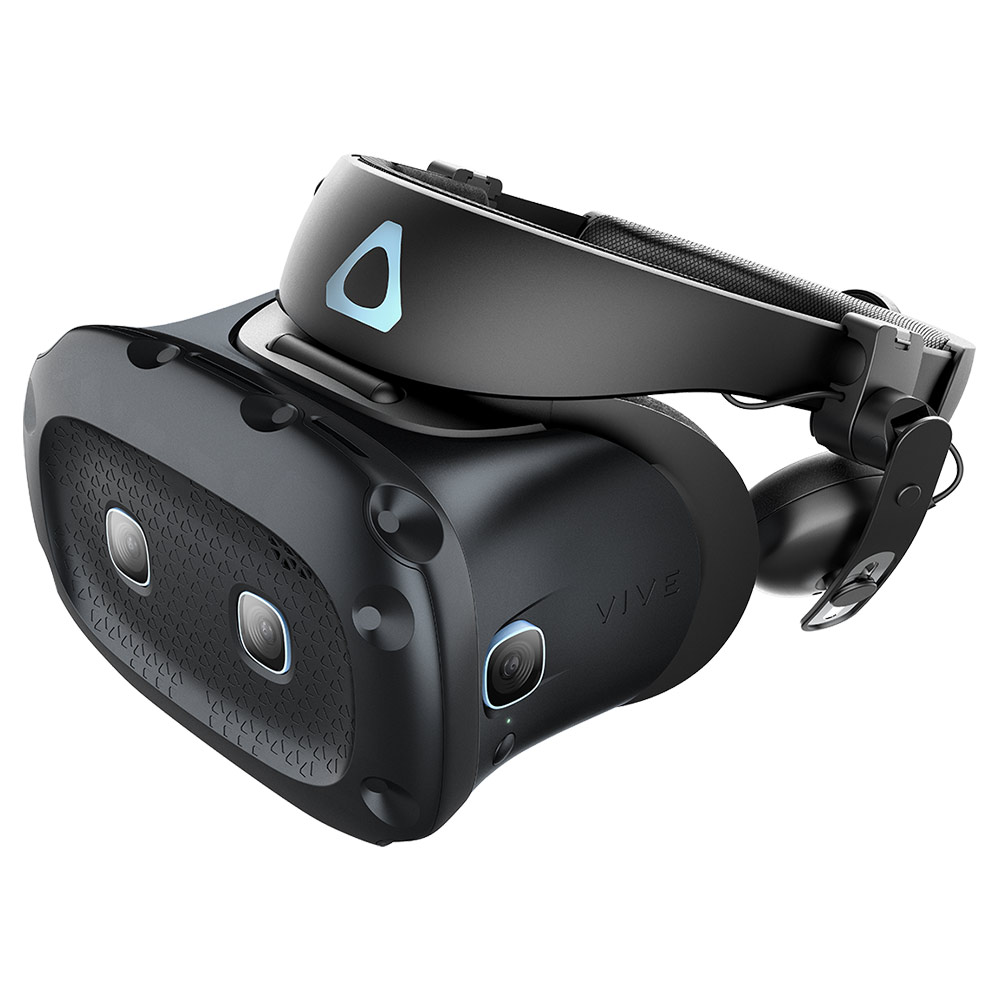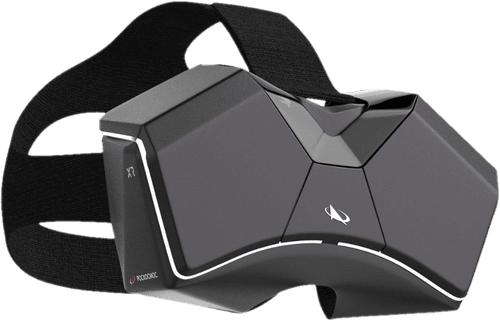HTC VIVE Cosmos Elite vs Roscosmos XR-2
When you compare the HTC VIVE Cosmos Elite to the Roscosmos XR-2 you can see which VR Headset is better. Let's take a look of the comparison, and see which model of VR Headset out ontop.
 HTC VIVE Cosmos Elite
HTC VIVE Cosmos Elite3.5
Based on 6 reviews
Lowest prices
What VR Headset is better?
Comparing two Virtual Reality Headsets: HTC VIVE Cosmos Elite and Roscosmos XR-2
When it comes to virtual reality headsets, there are a few important factors that set them apart. Here, we will compare the features of the HTC VIVE Cosmos Elite with those of the upcoming Roscosmos XR-2.
The first factor is field of view. The HTC VIVE Cosmos Elite has an impressive 110° field of view, while the Roscosmos XR-2 boasts an even more impressive 157° field of view – this means users get a much wider range of peripheral vision when using the latter headset. This could be useful for immersive gaming experiences or watching films in VR.
Next is resolution; the HTC VIVE offers a 1440 x 1700 pixel resolution, while the Roscosmos XR-2 offers 5760 x 2800 pixels which is significantly higher than its competitor’s offering. This could make a big difference to image quality and allow for greater detail when playing games or watching films in VR.
In terms of CPU requirements, both headsets have similar needs; they require an Intel Core i5-4590 or AMD FX 8350 equivalent or better processor as well as either NVIDIA GeForce GTX 970 4GB or AMD Radeon R9 290 4GB equivalent or better graphics cards to run correctly. As such, neither headset is particularly demanding from a hardware standpoint – both are capable enough for most users who want to experience virtual reality on their PC system at home.
The operating systems supported by these two headsets differ slightly; The HTC VIVE only supports Windows devices whereas the Roscosmos XR-2 supports Windows and Linux platforms - so if you’re looking for a VR headset that works across multiple operating systems then you may find yourself leaning towards this one. Additionally, both offer room scale tracking and 360 degree tracking capabilities making them ideal for all types of users wanting to experience full immersion into virtual worlds with their headsets on .
Finally, refresh rates also differ between these two devices; The HTC Vive has 90 Hz compared to 120 Hz on the Roscosmos XR-2 – this means that images appear smoother on screen when playing games or viewing media through this device due to its higher refresh rate compared to its competitor’s product.
Overall, it appears that both headsets have their pros and cons; The VIVE Cosmos Elite has great compatibility with Windows PCs but lacks in comparison when it comes to pixel resolution and refresh rates compared to its rival device - however, it may still be worth considering if you don't want/need super high resolutions but instead want great compatibility with your current system set up plus good performance overall thanks to low hardware requirements . On the other hand , If you're after superior picture clarity and smoothness without compromising too much on minimum hardware specifications then perhaps going with the ROCOSMOS XR 2 would be your best bet here since It offers significantly better resolutions along with higher refresh rates despite having similar CPU & GPU requirements as well as multi platform support(windows & linux).
Having used both products personally I can confidently say that my preference lies towards using ROSCOSMOS XR 2 due mostly because I found myself feeling far more immersed during my usage due its superior pixel resolution & refresh rate combination making visuals look more crisp & detailed when compared directly against what was experienced via my time spent using HTC VIVE COSMOS ELITE . All things considered ,both are solid options so ultimately it's down up user preferences based off individual needs/requirements .
Specs comparison between the two VR Headsets
| HTC VIVE Cosmos Elite | Roscosmos XR-2 | |
|---|---|---|
| Overview | ||
| Brand | HTC | Roscosmos |
| Model Name | VIVE Cosmos Elite | XR-2 |
| Release Date | 32020 | |
| Country of Origin | Taiwan | Russia |
| Category | PC VR | PC VR |
| Display | ||
| Field of View | 110° | 157° |
| Resolution | 1440 x 1700 px (per eye) | 5760 x 2800 px |
| Refresh Rate | 90 Hz | 120 Hz |
| Display Type | LCD | LCD |
| Minimum Requirements | ||
| Min. CPU Required | Intel Core i5-4590 or AMD FX 8350 equivalent or better | |
| Min. Graphics Required | NVIDIA GeForce GTX 970 4GB, AMD Radeon R9 290 4GB equivalent or better VR Ready graphics card | |
| Min. RAM Required | 4GB | |
| Operating Systems | Microsoft Windows | Microsoft Windows,Linux |
| Sizing | ||
| Weight | 702 g | |
| Dimensions | 130 x 107 x 77 mm | |
| Features | ||
| Room Scale? | YES | YES |
| 360 Tracking? | YES | YES |
| Front Camera? | YES | |
| Eye Tracking? | YES | |
| Usable with Glasses? | YES | |
| Built in Headphones? | YES | |
| Built in Microphone? | YES | |
| Flip Visor? | YES | |
| IPD Adjustment? | YES | |
| Lens to Eye Adjustment? | YES | |
| USB? | YES | YES |
| MicroUSB? | YES | |
| Display Port? | YES | |
| Mini Display Port? | YES | YES |
| HDMI? | YES | |
